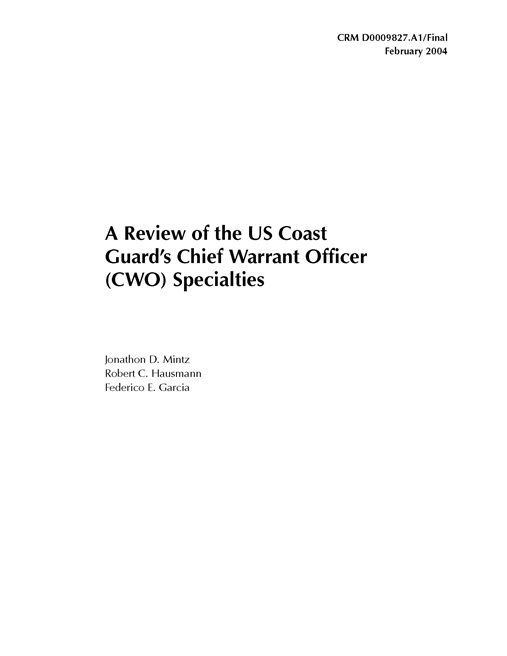The Coast Guard has significantly restructured its enlisted workforce based on the results of the Joint Rating Review (JRR). The JRR, which concluded in July 2003, combined several enlisted ratings to establish four new ratings: Information Systems Technician (IT), Operations Specialist (OS), Electronics Technician (ET), and Boatswains Mate (BM)[1]. This process also did away with five enlisted ratings (Fire Control Technician (FT), Quartermaster (QM), Radarman (RD), Telecommunications Specialist (TC), and Telephone Technician (TT).
The JRR, though, did not specifically address accession paths to chief warrant officer (CWO) for the new ratings. Thus, the enlisted restructuring may have had unintended effects on the CWO corps. In addition, changes in technology and a rapid expansion of missions have led to changes in the work performed by warrant officers.
The CWO community has a long history of serving the United States Coast Guard. A new effort, similar to the JRR, was required for CWOs—to identify the effects on the CWO community from changes in enlisted to CWO career paths, as well as occupational boundaries, the effects of future missions, and other issues in support of the Future Force 21 workforce initiatives. Therefore, the Coast Guard’s Assistant Commandant for Human Resources asked the Center for Naval Analyses to evaluate the CWO specialty structure and make recommendations to strengthen the CWO corps.
Download reportApproved for Public Release; Distribution Unlimited.
Details
- Pages: 80
- Document Number: CRM-D0009827-A1-Final
- Publication Date: 2/1/2004
